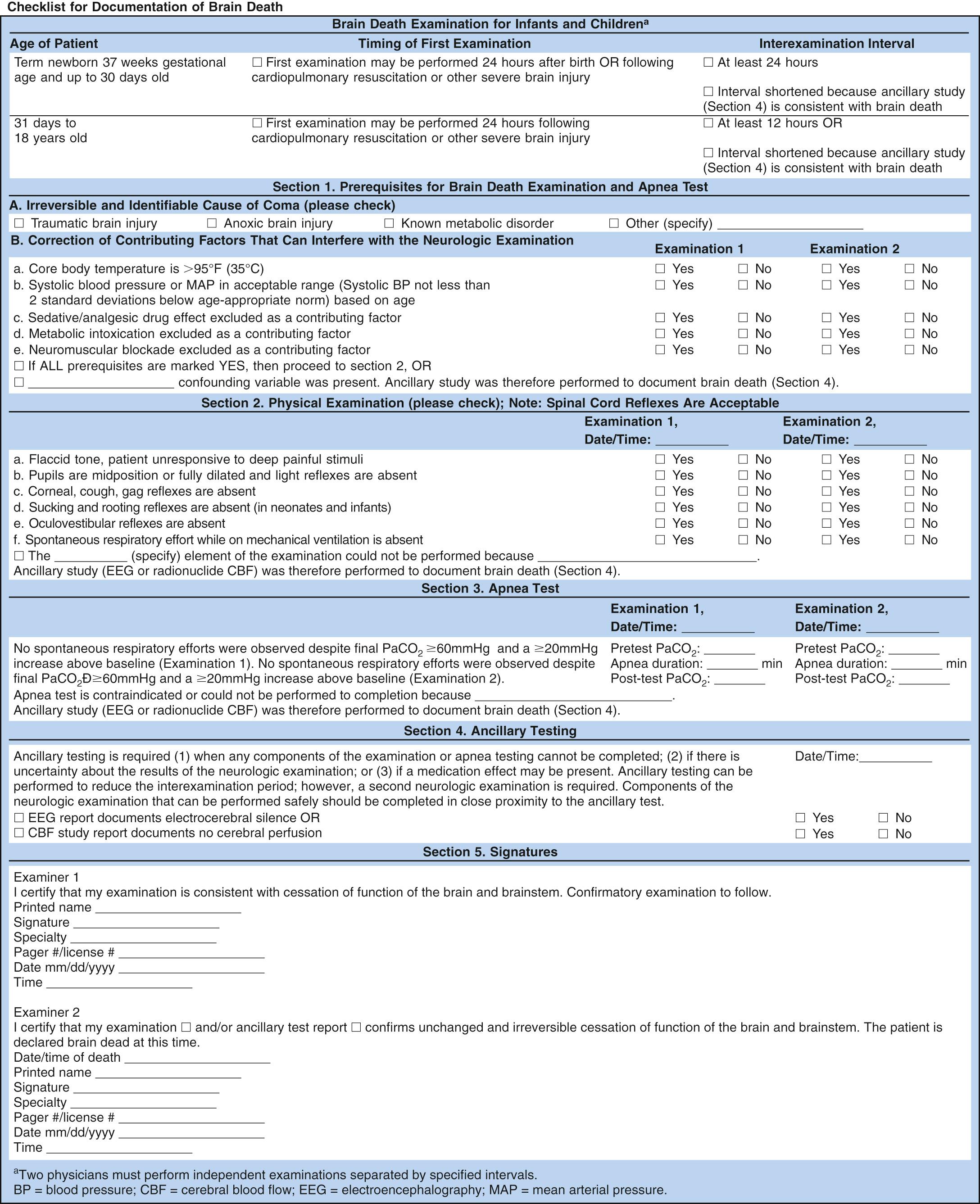Physical Address
304 North Cardinal St.
Dorchester Center, MA 02124
Brain death is the irreversible cessation of all functions of the entire brain, including the brainstem. It is also known as death by neurologic criteria and is legally accepted as death in the United States.
In children, brain death usually develops after traumatic brain injury (TBI, including brain injury from nonaccidental trauma) or asphyxial injury. Pathogenesis is multifactorial, with the end result being irreversible loss of brain and brainstem function.
Current guidelines do not apply to preterm infants <37 wk gestational age ( Fig. 86.1 ).

Brain death is determined by clinical assessment. Although ancillary tests such as electroencephalography (EEG) and cerebral blood flow (CBF) studies are sometimes used to assist in making the diagnosis, repeated clinical examination is the standard for diagnosis. The 3 components for determining brain death are demonstration of coexisting irreversible coma with a known cause , absence of brainstem reflexes , and apnea .
Before a determination of brain death may be made, it is of utmost importance that the cause of the coma be determined using the history, any radiology, and laboratory data, to rule out a reversible condition. Potentially reversible causes of coma include metabolic disorders, toxins, sedative drugs, paralytic agents, hypothermia, hypoxia, hypotension/shock, recent cardiopulmonary resuscitation (CPR), hypo-/hyperglycemia, hypo-/hypernatremia, hypercalcemia, hypermagnesemia, nonconvulsive status epilepticus, hypothyroidism, hypocortisolism, hypercarbia, liver or renal failure, sepsis, meningitis, encephalitis, subarachnoid hemorrhage, and surgically remediable brainstem lesions. Confounding factors must be corrected before initiation of brain death assessment.
The state of coma requires that the patient be unresponsive, even to noxious stimuli. Any purposeful motor response, such as localization, does not constitute coma. Likewise, any posturing (decerebrate or decorticate) is not consistent with coma, and therefore not consistent with brain death. The presence of spinal cord reflexes—even complex reflexes—does not preclude the diagnosis of brain death.
Become a Clinical Tree membership for Full access and enjoy Unlimited articles
If you are a member. Log in here